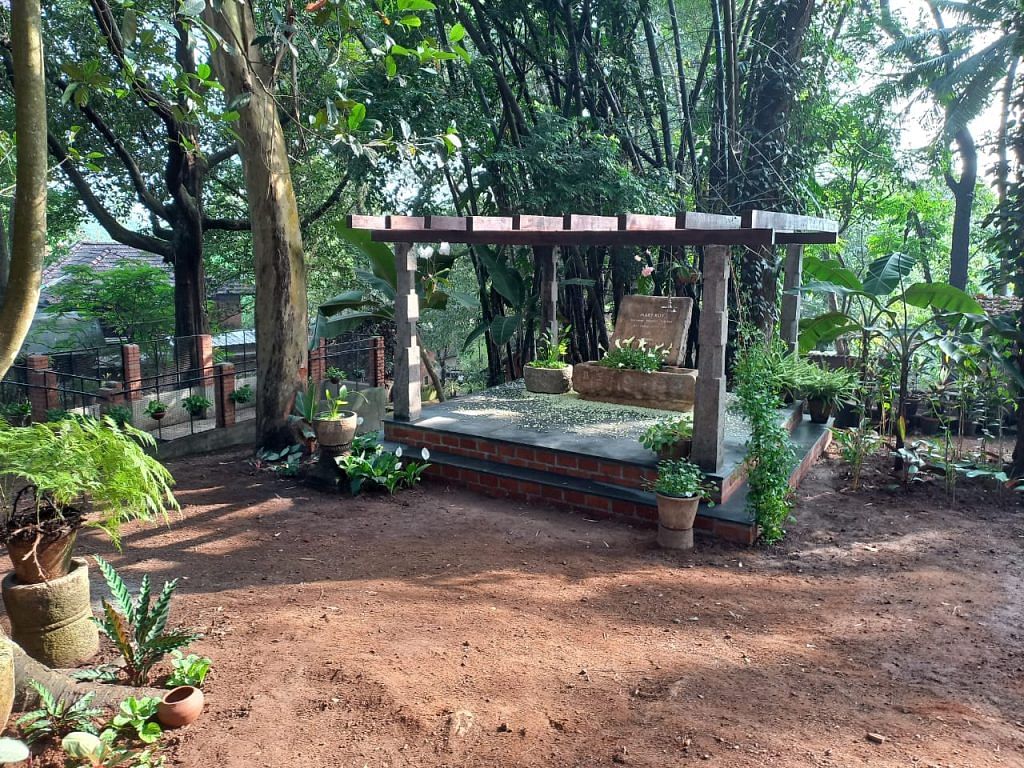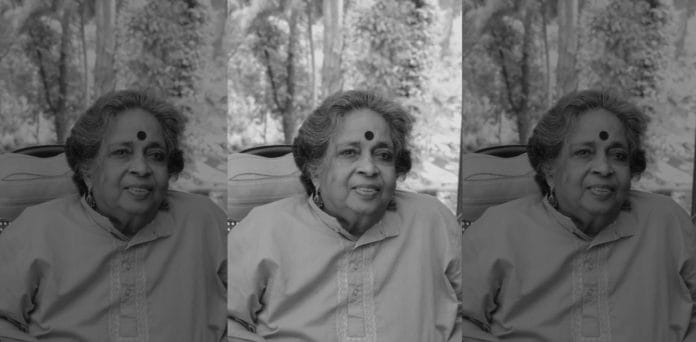Mary Roy is best known for fighting the landmark case that allowed Kerala’s Syrian Christian women equal rights in their father’s property. But what defines her is not her fight. It is how she went about it — independently and with unwavering determination.
In 1964, 30-year-old Roy left her alcoholic husband, Rajib Roy, in Assam and returned to Kerala. With two young children – Lalit and Arundhati – and nowhere to go, she took refuge in her abusive father’s unused cottage in Ooty. But her brother, mother, and “several goondas” arrived soon, asking her to vacate.
She wanted to fight but “everyone laughed” at her, and no lawyer would accept her brief, Roy told author and former student George Skaria in Brick By Brick, a book about her life and the making of her renowned school Pallikoodam.
So Roy waited, for 25 years, until she had made enough money to be unbothered by “what people would say.” She flew to Delhi in 1983, found a lawyer and filed a PIL in the Supreme Court against the Travancore Christian Succession Act, which stated that daughters could only inherit one-quarter of a son’s inheritance or Rs 5,000 as dowry, whichever amount was lesser.
But she didn’t do it for the public good, at least not at first. “Oh, I was just angry. I didn’t have any other reason,” Roy said in a 2006 interview.
Her efforts got the Act abolished in 1986. But it was only in 2010, over 50 years after she was confronted by her brother, that she finally received her rightful share in the property. The five cents of land, worth Rs 2 crore then, was given to charity.
“I don’t need it. But I want to show the world that I can get what I want,” she had said in a 2002 interview.
The case is a microcosm of Roy—fiery, defiant and unstoppable.
Also read: Prastuti Porasor is Assam’s one-woman cultural powerhouse and a ‘hero’ for 2 decades now
A hands-on teacher
Born to entomologist PV Isaac and his wife Susy in 1933 in Travancore’s Aymanam, Roy was, by her own admission, “devoid of any ambition” before getting married. The famed educationist had gotten through her BA from Queen Mary’s College, Madras, with “a gorgeous Third Class for everything.”
She regards her children as the catalysts that prompted her to change. She chose a teacher’s job because it was ideal for her situation. She would get her holidays when they would, and her work timings would align with their class schedule.
Pallikoodam started in 1967 as a school with no name in Kottayam’s Rotary Club. Eventually named Corpus Christi, it began operations with seven students, including Lalit and Arundhati.
Roy had a hands-on approach to teaching. “Right from bathing us, to putting us to sleep, to teaching us, she would do the entire gamut,” says Skaria, who was part of Roy’s first batch.
There were no textbooks. Students were encouraged to learn through experience. And from English to Geography, Roy took charge of all subjects. “I do not remember Mrs Roy sitting down in class; she would constantly be moving around, especially when teaching Shakespeare,” recalled a former student in Brick By Brick.
Also read:
Skaria’s parents took a risk enrolling him in a school with no official registration because they saw that Roy was doing something that stood out.
Mary Roy’s impact on education and women’s rights resonates with the experiences of many activists. For instance, Aruna Roy, who has also fought for women’s empowerment, emphasizes the importance of understanding the unique challenges faced by women in education.
Roy’s methodology soon gained widespread popularity, and more people wanted their children to be taught by her.
It was a stark contrast to her reputation just a few years earlier — a young single mother rejected by an abusive father, alienated by her family over property and a woman who didn’t think twice before taking on the church in a Christian-majority district.
In 1974, the school had to be expanded due to high demand. Four-and-a-half acres of land were purchased in Kalathipady. Designed by architect Laurie Baker, the brick buildings became an “isle of excellence” in the middle of Kottayam, says Skaria, now president of the school’s board.
The school is unique for its use of Malayalam as a medium of instruction until Class III, after which it switches to English. According to Roy, the imposition of English on Malayalam-speaking children led to their “personality being trodded upon”. Roy’s approach caused several parents to withdraw their children, but those who stayed on saw the benefits.
“Mary Roy taught us to be proud of our language and our roots,” says Tess Joseph, now a teacher at Pallikoodam and a student from the fourth batch. “It’s always namaskaram, not good morning or good afternoon.”
Also read: Not just brother vs brother. Bharat Forge to Hinduja, women are fighting for family business
‘She used to be a terrror’
Roy was not without her contradictions. Her daughter and Booker prize-winning author Arundhati Roy described her as harsh, bitter and beautiful.
“She was very harsh with them [her children]. I guess that was because of her own personal life, but she never took it out on the students,” says Joseph.
Roy was like a mother to Joseph. “I learnt all my values from Mary Roy,” she says. This is a sentiment echoed by Skaria and multiple other students quoted in his book.
But that was not to say she was soft on them. “She used to be a terror. Initially, as a kid, I used to do a lot of things because I was scared of her. Now I realise that all these things have become a part of me, and it was all for my good,” adds Joseph.
Roy was never one to shy away from controversy. She didn’t seek it, but when she stood up for her rights and the rights of others, she didn’t let go. “She goes all the way up to get justice and what she feels is right,” says Skaria.
Joseph adds that Roy empowered her students to fight for change. In his book, Skaria recounts that when a Pallikoodam alumnus alerted her about a water problem faced by the Institute of Child Health in Kottayam, Roy told the whole school about it. Eventually, a few students took the initiative to meet then Kerala CM AK Antony and brought the matter up with him. Rs 1 lakh was sanctioned for the hospital to buy a water pump.
“Bathrooms and garbage were her pet projects,” says Joseph. “She used to clean her bathroom herself and make sure all of us did it too. Now wherever I go, be it the train or in school, I clean the bathroom before and after I use it.”

Skaria adds that apart from being a great teacher, she also had a sharp business mind. But he says Roy was “very clear” about not wanting a large empire. Pallikoodam was her sole focus.
She was involved in the school’s functioning up until 2021. She died on 1 September 2022 after a long battle with age-related illness and chose to be cremated. Part of her ashes are kept at Pallikoodam in a memorial called The Grove. A plaque there reads—Mary Roy: Dreamer, Warrior, Teacher.
(Edited by Zoya Bhatti)






